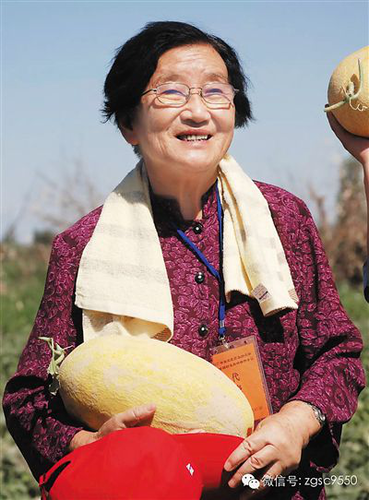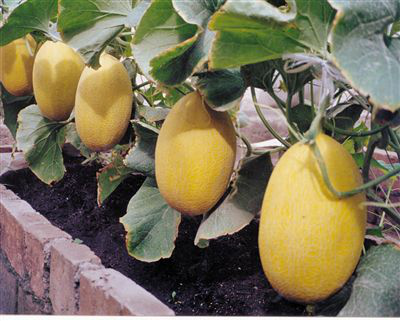
Wu Mingzhu [Women Voice]
Wu Mingzhu, 88, a melon-growing expert and an academician of the Chinese Academy of Engineering, introduced her newly-published biography at the 112th anniversary of Southwest University (SWU) on April 18 in the municipality of Chongqing.
In 1953, Wu graduated from the Department of Horticulture and Fruit Science of SWU, which was then called Southwest Agricultural College.
Early on, she was assigned to work in the Rural Work Department of the Central Committee of the Communist Party of China. Although it was a good job, Wu unsatisfied. "What I studied was the science of fruit and vegetables. I wanted to work in the field not in an office," said Wu.
In 1955, Wu voluntarily went to work in Shanshan County, Turpan Basin in northwest China’s Xinjiang Uygur Autonomous Region where working conditions were hard.
She found that the Hami melon, a rare specialty fruit which was once common in the area, was in danger of becoming extinct if it was not properly cultivated.
Wu said it was her responsibility to develop the crop and its varieties. he embarked on a survey of the Hami melon plants left in existence and established a basic archive.
To consummate the archive, Wu spent a full three years visiting over 300 production teams throughout the region, sorting the melon resources of the entire region into 44 varieties.
In 1958, Wu began to promote the modern technology of cultivating melons among farmers.
However, facing the local farmers who were accustomed to folk cultivation methods, it was difficult to persuade them to change.
With the help of a famous local melon expert, Wu opened up three acres of wasteland to plant melons according to scientific knowledge.
When autumn arrived, local farmers found the melons Wu planted in a scientific way were particularly delicious. From then on, the farmers began to adopt Wu’s scientific growing methods.
Under the management of Wu, over 30 varieties of melons and watermelons approved by provincial varieties were selected, and the promotion area covered 80 percent of Xinjiang's main commodity areas, and a group of melon-rich villages emerged.
In 1973, in order to speed up the breeding process and shorten the cultivation cycle, Wu, 42 then, decided to go to Hainan for melon breeding.
"I believe that the Hami melon should be introduced to the whole country," said Wu.
Hainan's autumn and winter seasons are warm and wet, and the light is sufficient for scientific experiments in seed propagation and other studies.
She wanted to develop Hainan as a pilot area to improve the speed and efficiency of breeding, so that the south area of China could also grow melons, and realized the dream of three-matured or even four-matured melons.
After numerous difficulties, finally in the 80s, the melon variety selected by Wu succeeded.
Under her leadership, the out-of-season Hami melon cultivated in Hainan could earn over 20,000 yuan per 0.16 acres per year. As long as farmers have a certain amount of funds and technology, they can obtain stable economic benefits.
Afterwards, Wu improved the level of melons and explored a complete innovation system for breeding.
"A gardener is an artist to shape new varieties," said Wu.
Wu has always contributed her own strength to the development of SWU.
She returned to the School of Horticulture and Gardening several times to share her experiences with young teachers and students.
In 2016, when SWU celebrated its 110th anniversary, Wu wrote an inscription for the College of Horticulture and Landscape Architecture.
Liu Peiying, Wu’s mentor commented by saying, "Wu studied hard then, put herself into practice and took a rigorous attitude towards science."
Wu said modestly, "In Xinjiang, there are thousands of science and technology workers like me. They have worked hard for decades on the frontline of agriculture. I'm just one of the ordinary ones."
Humble as Wu is, her achievements have been enough to change the cultivation of Chinese fruit for generations.

Wu Mingzhu (left) checks the growth of a Hami melon. [Women Voice]

A Hami melon grown by Wu Mingzhu. [Women Voice]

